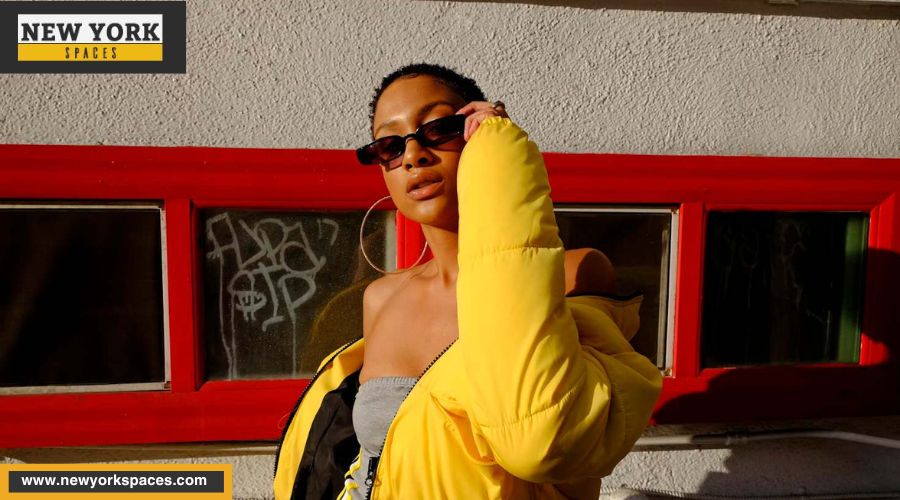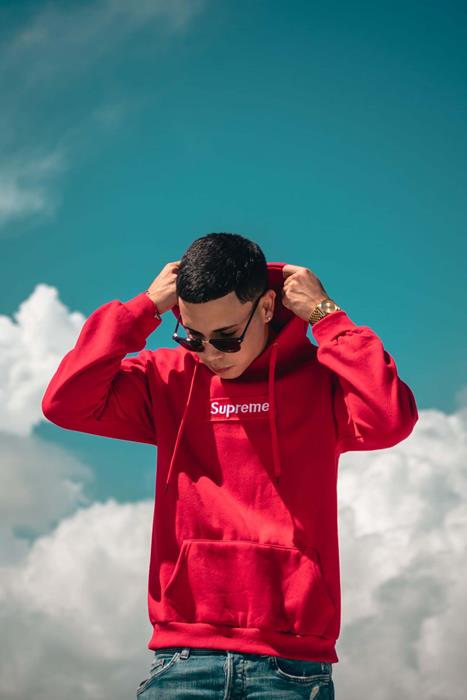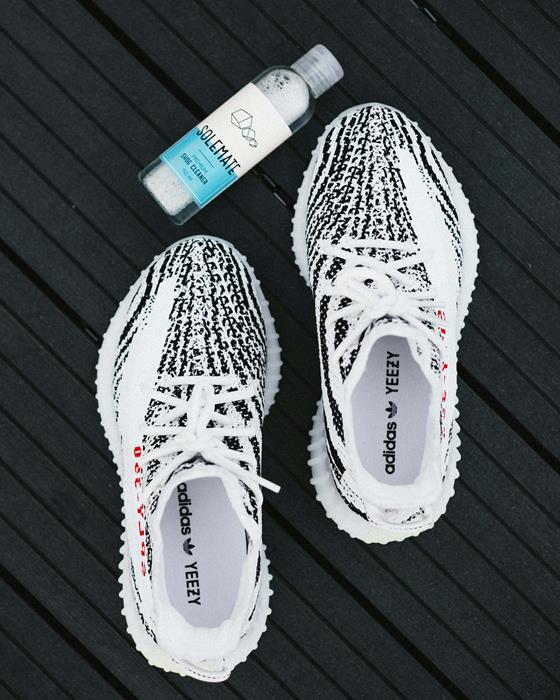New York City, a global fashion capital, has witnessed a remarkable transformation in its fashion scene, transitioning from the exclusive realms of luxury fashion to the dynamic and accessible world of streetwear. This shift reflects broader changes in society, where fashion is no longer just about luxury labels but also about street culture, inclusivity, and self-expression.
Through this evolution, New York continues to set trends and influence the global fashion industry, demonstrating its ability to adapt to its diverse population’s changing tastes and values. But how did this transformation happen? Let’s dive into the evolution of New York’s fashion from high-end luxury to the cool, casual vibes of streetwear.
The Origins of Luxury Fashion in New York
New York’s luxury fashion scene didn’t just appear out of thin air. It was built over decades and shaped by visionary designers and iconic brands. This story of luxury and elegance is deeply intertwined with the city’s history, reflecting its status as a melting pot of cultures and a beacon of innovation.
Historical Context
New York’s affair with luxury fashion began in the Roaring Twenties when the city was alive with jazz, prohibition speakeasies, and a booming economy. This era set the stage for New York to establish itself as a center of sophistication and style.
- The Roaring Twenties: An era of economic prosperity that increased consumerism and a demand for luxury goods.
- Fifth Avenue: Became the heart of New York’s luxury shopping, home to upscale department stores and boutiques.
Key Players
Several designers and brands have shaped New York’s luxury fashion scene. Their influence has not only defined the city’s style but has also had a lasting impact on global fashion trends.
- Ralph Lauren: Known for his quintessential American style, combining classic elegance with a rustic, preppy twist.
- Calvin Klein: Revolutionized the fashion industry with his minimalist designs and became synonymous with sleek, understated luxury.
- Donna Karan: Her brand DKNY captured the spirit of New York, offering modern, practical fashion for working women.
Global Influence
New York’s luxury fashion didn’t just stay within the city’s borders; it echoed worldwide, influencing trends and setting standards in the global fashion industry.
- Fashion Weeks: New York Fashion Week became a global phenomenon, attracting designers, celebrities, and media from around the world.
- Trendsetting: New York’s fashion trends have often become global styles, from preppy to minimalist chic.
- Cultural Export: Beyond fashion, New York’s luxury brands have become cultural icons, representing a blend of sophistication and modernity.
The evolution of luxury fashion in New York is a testament to the city’s dynamic spirit. It’s a narrative of creativity, innovation, and an unwavering commitment to excellence. As we look back at the origins of this glamorous industry, we’re reminded of the countless individuals who have contributed to making New York a global fashion capital. Their legacy continues to inspire and shape the future of fashion, not just in New York but worldwide.
The Rise of Streetwear in New York
Streetwear in New York is more than just fashion; it’s a cultural movement that emerged from the streets, embodying the city’s diverse, vibrant spirit. This section explores how streetwear carved out its niche in New York fashion, transforming from underground styles to mainstream trends.
Definition and Origins
Streetwear’s roots in New York can be traced back to the late 70s and early 80s, when hip-hop was burgeoning and skate culture was taking off. These social movements provided the perfect backdrop for streetwear’s rise, blending music, art, and fashion into a unique style.
- Hip-Hop Influence: The genre’s explosion in New York helped popularize oversized, bold clothing that would become staples in streetwear.
- Skate Culture: Skaters’ practical, durable, yet stylish attire influenced the casual, laid-back look of streetwear.
The Catalysts
Several factors contributed to the rise of streetwear in New York, transforming it from a niche interest to a significant fashion movement.
- Cultural Diversity: New York’s melting pot of cultures infused streetwear with varied influences, making it rich and eclectic.
- Artistic Expression: Street art and graffiti, prevalent in New York, offered visual inspiration that was often reflected in streetwear designs.
- Community and Identity: Streetwear became a way for individuals to express their identity and belonging to specific cultural or social groups.
Notable Figures and Brands
A few key players were instrumental in elevating streetwear from its underground origins to the forefront of New York fashion.
- Supreme: What started as a skate shop in Manhattan quickly evolved into a global streetwear giant known for its limited releases and collaborations.
- Stüssy: Though not born in New York, Stüssy’s influence on the city’s streetwear scene was profound, blending surf culture with New York’s urban vibe.
- A Bathing Ape (BAPE): Japanese brand BAPE found a fervent following in New York, showcasing streetwear’s global appeal and influence.
Global Influence
As streetwear grew, its influence stretched beyond New York, shaping global fashion trends and attitudes.
- International Collaborations: New York streetwear brands began collaborating with international designers and luxury fashion houses, blurring the lines between street and high fashion.
- Fashion Weeks: Streetwear’s presence in New York Fashion Week highlighted its ascent from the streets to the runway, gaining recognition and respect within the industry.
- Cultural Impact: The global spread of streetwear has influenced not just fashion but lifestyle and culture, with New York often at the epicentre of this movement.
The rise of streetwear in New York is a story of innovation, resilience, and the power of cultural expression. It reflects the city’s dynamic energy and ability to influence and inspire beyond its borders. As streetwear continues to evolve, its roots in New York’s rich cultural tapestry ensure it remains a vital and vibrant part of the global fashion landscape.
Cultural and Social Influences
The unique fabric of New York’s streetwear scene is intricately woven with the city’s cultural and social dynamics. This evolution reflects more than just fashion trends; it’s about the voices, movements, and communities that have shaped the city’s identity.
Music and Art
Music and art have always been at the heart of New York, playing pivotal roles in the development and proliferation of streetwear.
- Hip-Hop’s Impact: Emerging from the streets of New York, hip-hop was instrumental in the early adoption and spread of streetwear, with its artists often seen donning and promoting these styles.
- Graffiti and Street Art: The visual language of the streets, graffiti, and street art not only decorated the city’s landscapes but also inspired graphic designs in streetwear, infusing apparel with vibrant, bold aesthetics.
Technology’s Role
The advent of the internet and social media platforms revolutionized how streetwear was consumed, shared, and sold, significantly impacting its growth and accessibility.
- Social Media Influence: Platforms like Instagram became showcases for streetwear enthusiasts, allowing for the rapid spread of trends and the formation of online communities.
- E-commerce Expansion: The rise of online shopping democratized access to streetwear, enabling small brands to reach a global audience without needing a physical retail presence.
Consumer Evolution
The streetwear movement has been characterized by its appeal to a broad and diverse audience, reflecting shifts in consumer behaviour and attitudes towards fashion.
- From Niche to Mainstream: Once the domain of specific subcultures, streetwear’s appeal has broadened, attracting a wide range of consumers seeking authenticity and self-expression.
- Youth Culture and Identity: Streetwear has become a means for young people to express their identities, aligning with movements and ideologies that resonate with their beliefs and values.
Sociopolitical Statements
Streetwear has often carried sociopolitical messages, reflecting the concerns and voices of the communities it represents.
- Activism Through Apparel: Many streetwear brands have used their platforms to address social issues, from racial equality to environmental sustainability, embedding these messages into their designs.
- Community Engagement: Streetwear brands frequently collaborate with local artists and activists, fostering a sense of community and shared purpose.
The interplay between culture, technology, and society has been critical in shaping New York’s streetwear scene. It reflects the city’s pulsating energy and its inhabitants’ desire to express themselves through what they wear. As streetwear continues to evolve, these cultural and social influences ensure it remains a dynamic and meaningful part of New York’s fashion landscape, resonating with a global audience drawn to its authenticity and vibrancy.
Key Moments of Transition
New York’s fashion scene has experienced several pivotal moments that have blurred the lines between luxury and streetwear, integrating these once-distinct worlds. These transitions have not only changed the way we view fashion but also how we define it.
Iconic Collaborations
Collaborations between high-end designers and streetwear brands have been instrumental in merging these two realms, creating something new and exciting.
- Supreme and Louis Vuitton: Perhaps one of the most talked-about collaborations, this partnership shattered preconceived notions about luxury and streetwear, showcasing the potential for unity between these disparate worlds.
- Adidas and Yeezy: Kanye West’s collaboration with Adidas brought high fashion to the streets, significantly impacting both sneaker culture and streetwear at large.
Celebrity Influence
Celebrities and influencers have played a crucial role in popularizing the fusion of luxury and streetwear, bridging the gap between these styles through their personal choices and endorsements.
- Rihanna and Puma: Rihanna’s role as creative director for Puma blurred the lines between high fashion and athletic streetwear, introducing high-end designs to a broader audience.
- A$AP Rocky’s Fashion Choices: Known for his unique style, A$AP Rocky frequently mixes luxury brands with streetwear, influencing his fans and followers to do the same.
Fashion Week Transformations
The inclusion of streetwear in major fashion weeks has been a critical moment of transition, signaling the acceptance of streetwear within the elite world of high fashion.
- Streetwear on the Runway: Brands like Hood By Air and Off-White have showcased their collections at New York Fashion Week, highlighting streetwear’s place on the global fashion stage.
- Diverse Representation: Including streetwear brands in fashion weeks has also led to more diverse representations of style and beauty, challenging traditional norms and expectations.
These key moments of transition have significantly influenced the fashion landscape, highlighting the fluidity and dynamism of New York’s fashion scene. By blending the high-end with the street, these pivotal shifts have opened up new possibilities for creativity and expression, democratizing fashion in once unimaginable ways. As we look to the future, it’s clear that these moments will continue to shape the evolution of fashion, breaking down barriers and fostering a more inclusive and diverse industry.
Challenges and Criticisms
While innovative and exciting, the fusion of luxury and streetwear in New York’s fashion scene has not been without its challenges and criticisms. These obstacles highlight the complexities of the fashion industry and the evolving expectations of its audience.
Adapting to Change
Traditional luxury brands have faced challenges adapting to the streetwear trend, balancing their heritage with the need to stay relevant in a rapidly changing market.
- Preserving Brand Identity: Luxury brands struggle to maintain their exclusive image while embracing the more accessible streetwear style.
- Responding to Consumer Demands: The shift towards casual, comfortable clothing requires luxury brands to rethink their designs without compromising quality.
Authenticity Concerns
As streetwear becomes more mainstream, questions arise about the authenticity of brands and the dilution of the streetwear culture that originally defined them.
- Commercialization: Critics argue that the commercial success of streetwear compromises its authenticity, moving away from its roots.
- Cultural Appropriation: There are concerns about brands appropriating street culture without acknowledging its origins or contributing to the communities.
The Future of Fashion in New York
Despite these challenges, the future of fashion in New York looks bright, with new trends and innovations poised to shape the industry.
Sustainability and Ethical Fashion
An increasing focus on sustainability and ethics in fashion points to a future where conscious consumption becomes the norm.
- Eco-friendly Practices: Brands are exploring sustainable materials and production methods to minimize environmental impact.
- Ethical Labor Practices: There’s a growing demand for transparency in the supply chain, ensuring fair labor practices and ethical treatment of workers.
Digital Innovation and Technology
Technology continues to revolutionize the fashion industry, from how clothes are designed and produced to how they are marketed and sold.
- Virtual and Augmented Reality: These technologies offer new ways for consumers to engage with fashion, from virtual fitting rooms to augmented reality fashion shows.
- E-commerce and Social Media: Online shopping and social media platforms will continue to play a crucial role in shaping fashion trends and consumer behaviors.
Emerging Designers and Brands
New York’s fashion scene is a launching pad for emerging designers and brands, promising a future of diversity and innovation.
- Diverse Perspectives: Up-and-coming designers bring fresh perspectives, challenging traditional norms and embracing inclusivity in fashion.
- Innovation in Design: Young brands are experimenting with new materials, styles, and concepts, pushing the boundaries of what fashion can be.
The evolution of New York’s fashion scene, shaped by its challenges and the response to them, continues to influence global fashion trends. As we look ahead, the blend of cultural heritage, innovation, and a commitment to sustainability and ethics promises an exciting new chapter in New York’s fashion story, reflecting a world that values diversity, creativity, and responsible consumption.
Conclusion
New York’s fashion evolution from luxury to streetwear is a tale of adaptation, cultural shifts, and style democratization. It reflects a broader movement towards inclusivity and expression in fashion, where what you wear is less about status and more about personal identity. As we watch this evolution unfold, one thing remains clear: New York will always be at the heart of fashion’s most exciting transformations.
The journey from the exclusive boutiques of Fifth Avenue to the bustling street markets of SoHo tells us more than just the story of changing fashion trends; it speaks to the city’s spirit. A spirit that embraces change, champions diversity, and celebrates the individual. In all its forms, New York’s fashion scene remains a vibrant, ever-changing tapestry that mirrors the dynamic city itself.




